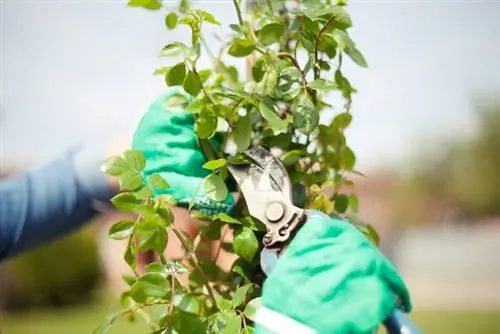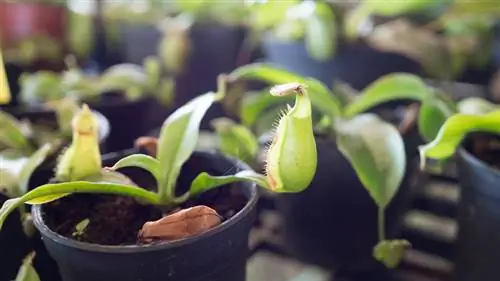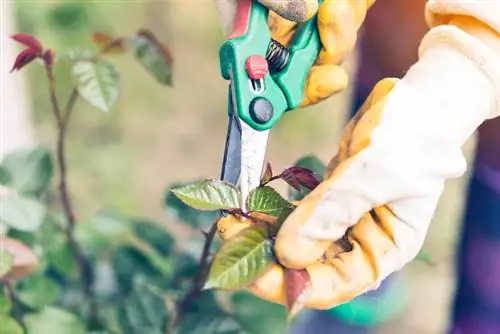- Author admin [email protected].
- Public 2023-12-16 16:46.
- Last modified 2025-01-23 11:20.
Do you - or your neighbor / a friend or someone else you know - have a particularly beautifully blooming and vigorous climbing rose in the garden that you would like to propagate? Go ahead - it's not as difficult as you might fear!

How to propagate climbing roses?
Climbing roses can be propagated by cuttings or cuttings. Cuttings are cut in August, dipped in rooting substrate and planted in potting soil. Cuttings are cut in autumn or winter, stored frost-free and planted in a sand-peat mixture in spring.
Propagate climbing roses through cuttings
The easiest way to propagate climbing roses is through cuttings that are cut immediately after flowering. The best time to cut cuttings is August, when it is still warm and sunny. The shoots are already well matured this late in the summer, so the chance of rooting is even better.
- Choose several shoots that are about 15 to 20 cm long and have just finished flowering.
- Each shoot should have around five to six eyes.
- Cut these from the mother plant with sharp, disinfected rose scissors (€25.00 on Amazon).
- The cutting surface should be kept slightly slanted.
- Remove all but the top two leaves.
- Dip the cut surface into a rooting substrate.
- Now plant the cutting in a pot at least 30 centimeters deep with sandy potting soil.
- Each cutting should have its own plant pot - roses don't like competition.
- Water the freshly planted cutting well.
- Put a cut PET bottle or a mason jar over the cutting.
- This serves as a mini greenhouse and is intended to provide a warm, humid climate.
The successfully rooted rose cuttings can be planted in their final location in May of the following year.
Success rate is around 30 percent
Cut several cuttings at once, even if you only want to grow one or two plants. For climbing roses, the success rate when propagating cuttings is around 30 percent, which means that out of three cuttings, only one takes root.
Propagation with cuttings
Instead of cuttings, you can also cut cuttings in late autumn or winter. This is a well-woody piece of shoot from which all leaves are removed. These shoots, which are between 20 and 30 centimeters long, are stored in moist sand and overwinter in a cold, frost-free room and can be planted in a sand-peat mixture from March onwards. The rooted cuttings can finally be planted out in autumn.
Tip
The success rate of rooting is said to increase if the cutting is inserted into a potato (which is also planted).






